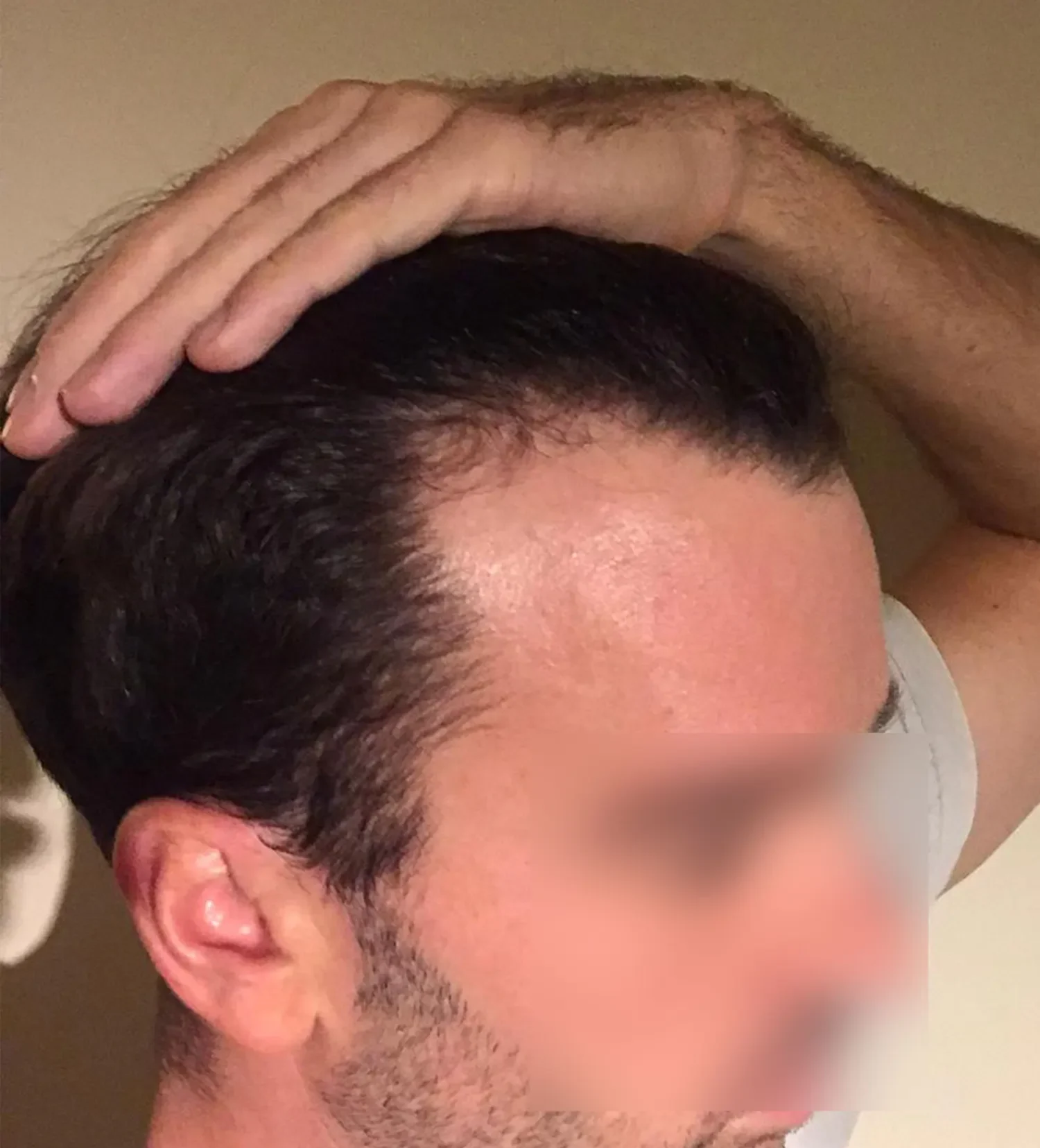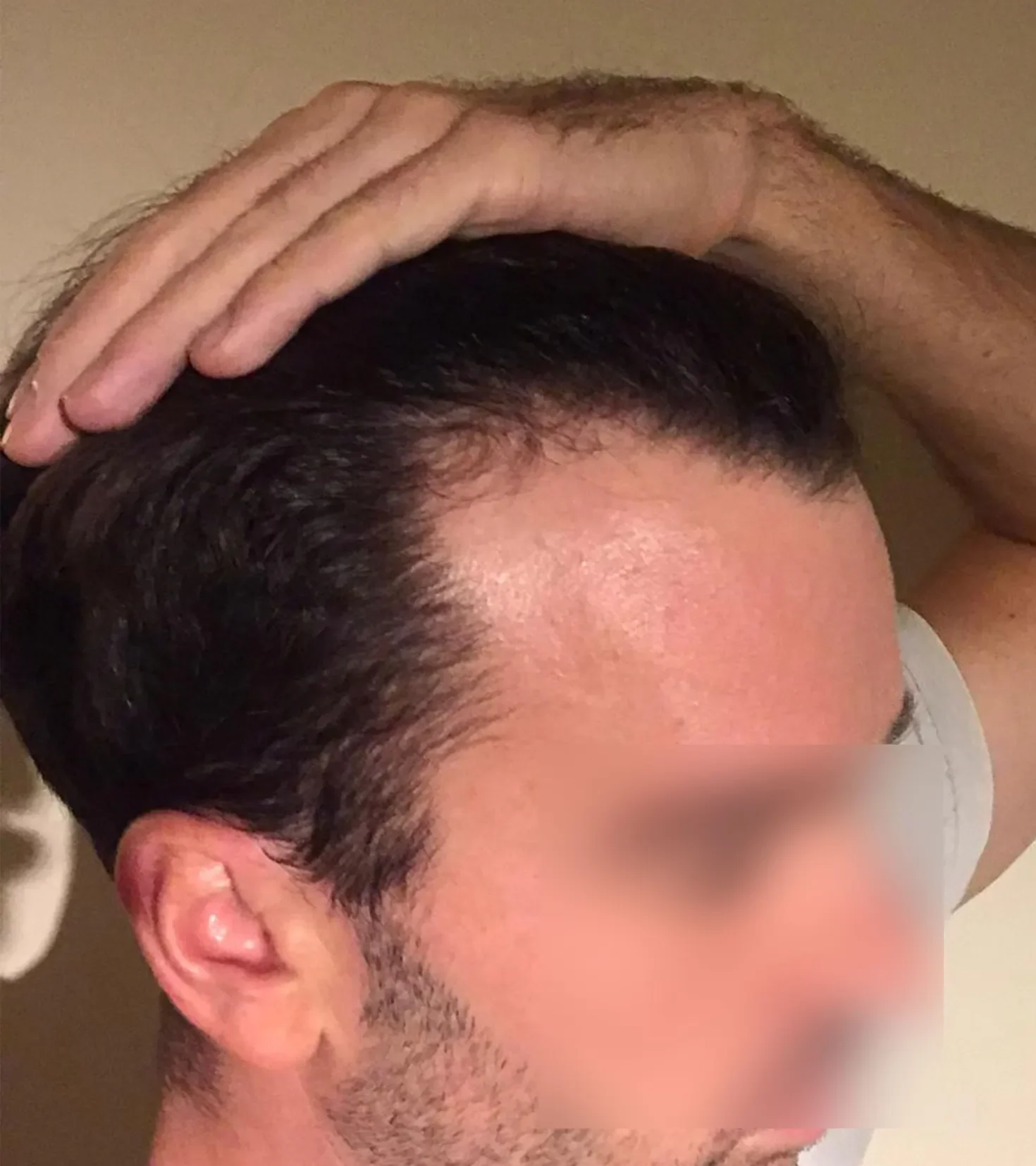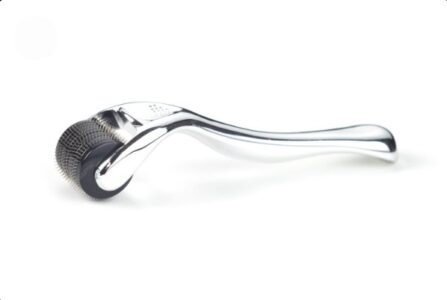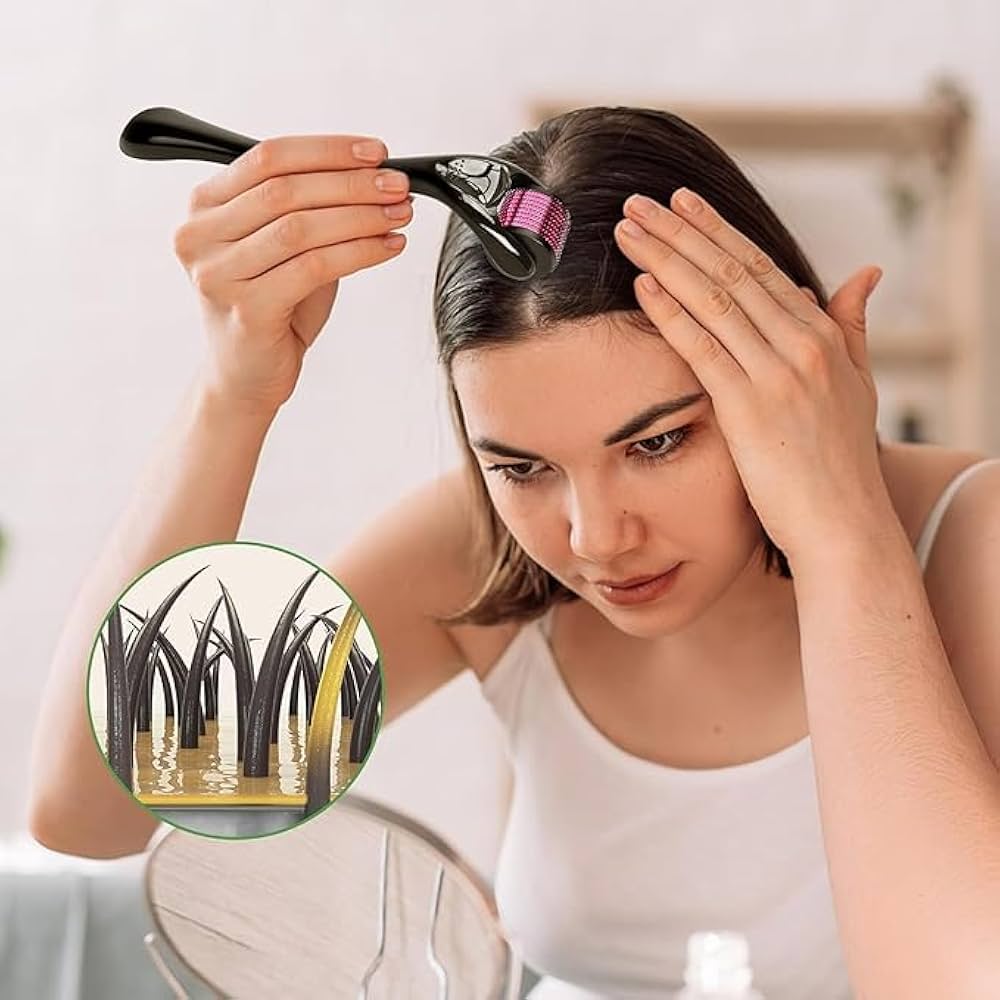Derma Roller for Hair Growth
A derma roller is a handheld device covered with hundreds of tiny needles that is used to stimulate hair growth on the scalp. This practice, also known as microneedling, works by creating micro-injuries that trigger the skin’s natural healing process. Many people combine derma rolling with other treatments, like minoxidil, to increase their effectiveness.
How Derma Rolling Works for Hair Growth
- Stimulates healing: The micro-injuries created by the needles prompt the body to send more blood and nutrients to the scalp, which encourages hair growth.
- Boosts collagen: The healing process increases collagen and elastin production in the skin and scalp. A healthy collagen network is vital for healthy hair follicles.
- Enhances product absorption: The micro-channels created by the derma roller allow hair growth serums and other topical treatments to penetrate deeper into the scalp, making them more effective.
- Activates growth factors: The process can activate growth factors and stimulate stem cells in hair follicles, which are crucial for hair growth.
How to Use a Derma Roller for Hair
- Start with a clean scalp: Wash your hair and ensure your scalp is completely dry before beginning.
- Sterilize the roller: Before and after each use, soak the derma roller in a solution of 70–90% isopropyl alcohol for 5–10 minutes. Rinse with water and let it air-dry.
- Roll the device: Apply light to moderate pressure as you roll the device over the desired area. Roll 5–7 times each in the vertical, horizontal, and diagonal directions to ensure even coverage.
- Target patchy areas: You can part your hair to ensure the needles can reach the scalp in areas of thinning.
- Apply serum afterward: For optimal results, apply a hair growth serum to your scalp after derma rolling. The micro-channels will help with absorption.
- Maintain hygiene: Always sterilize the roller after use and store it in a clean, dry place.
How to Choose the Right Derma Roller
- Needle size: For beginners and for promoting hair growth, needles ranging from 0.5mm to 1.0mm are generally recommended. Longer needles may be too aggressive for at-home use.
- Needle material: Look for derma rollers made with high-quality, durable materials like titanium or stainless steel.
Potential Side Effects and Risks
When used improperly, derma rolling can carry risks and side effects:
- Infection: An unsterilized roller can introduce bacteria into the micro-wounds on your scalp, causing an infection.
- Irritation and redness: Mild redness and irritation are common and usually subside within a day or two.
- Scarring: Using excessive pressure or an incorrect needle length can cause damage and lead to scarring.
- Increased hair shedding: Some temporary hair shedding can occur initially as weaker hairs are released.
Important Considerations
- Avoid daily use: Your scalp needs time to heal between sessions. Using a derma roller 1–2 times per week is often recommended. For larger needle sizes, less frequent use may be necessary.
- Professional consultation: Before starting, especially if you have sensitive skin or a pre-existing scalp condition like psoriasis or eczema, consult a dermatologist.
- Avoid wounds: Never use a derma roller over active acne, open wounds, or inflamed areas on your scalp.
How it Works
Creates micro-injuries
A derma roller is a handheld device covered in tiny, fine needles. As you roll it over your skin, these needles create thousands of microscopic punctures in the top layer of the epidermis, creating what is known as “micro-injuries”.
Triggers a wound-healing response
Your skin reacts to these micro-injuries by triggering its natural wound-healing response. This process sends a rush of growth factors and increased blood flow to the treated area to repair the punctures.
Boosts collagen and elastin production
The wound-healing cascade stimulates the production of collagen and elastin, two proteins essential for maintaining skin’s elasticity, firmness, and plumpness. Over time, this helps to improve overall skin structure.
Enhances product absorption
The tiny channels created by the needles also allow serums and other skincare products to penetrate deeper into the skin. This significantly increases their absorption and effectiveness.


have a question?
Quick answers to questions you may have
Does using a derma roller hurt?
How often should I use a derma roller?
What should I do after using a derma roller?
- Apply a hydrating serum: Use a gentle, hydrating serum, such as one containing hyaluronic acid, to soothe the skin.
- Avoid harsh ingredients: Skip products with retinol, vitamin C, or other harsh actives for at least 24 hours to prevent irritation.
- Protect from the sun: Apply sunscreen with a high SPF, as your skin will be more vulnerable to sun damage.
- Avoid makeup: Wait at least 24 hours before applying makeup to prevent bacteria from entering the micro-channels in your skin.
What results can I expect, and when will I see them?
With consistent, proper use, many people notice an improvement in skin texture and enhanced product absorption within a few weeks. More significant changes, such as reduced scarring or wrinkles, may take several months to become visible because collagen production is a gradual process. You should manage expectations, as the results from at-home derma rolling are typically less dramatic than professional microneedling treatments.

